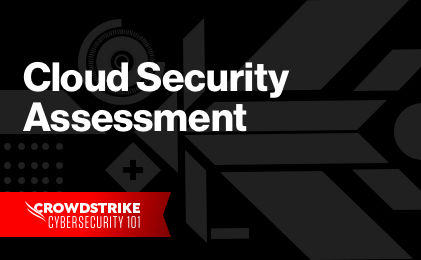Understand CNAPPs with Our Guide
Understand CNAPPs with Our Guide
What Is Cloud Native Security?
The cloud native approach introduces seamless scalability, fully managed infrastructure, efficient deployments, and increased security. Cloud providers manage the cloud platform’s security through the shared responsibility model, but this leaves organizations wholly responsible for securing their resources within the cloud.
Cloud native security is a collection of technologies and practices that comprehensively address the dynamic and complex needs of the modern cloud environment. Though it has become a foundational principle, implementing cloud-native security from the ground up can be challenging.
In this article, we’ll explore how cloud-native security represents a shift from traditional on-premises security to a more integrated model. We’ll also examine how cloud-native application protection platform (CNAPP) capabilities — such as threat detection, compliance automation, and vulnerability management — address critical security aspects affecting cloud security posture.

Customer Story: Mercury Financial
Mercury Financial is a Texas-based credit card and consumer lending company operating in a cloud-native environment. Learn how CrowdStrike helped build a culture of security with a full suite of products, services, and threat intelligence on a consolidated cybersecurity platform.
Download NowUnderstanding the cloud native approach
The cloud native approach entails a fully optimized process of building, testing, and deploying seamless, rapid, and resilient software in the cloud. When the cloud-native revolution began in the early 2000s, on-premises data centers weren’t equipped to handle challenges like traffic spikes and latencies across different geographical regions. Since then, developers have completely reimagined the entire software production process, departing from the traditional, monolithic infrastructure. The technologies that emerged from this revolution are now considered core cloud native concepts.
Every cloud native application utilizes several, if not all, of the following concepts:
- Containerization
- Microservices
- Declarative APIs
- DevOps
- Infrastructure as code (IaC)
Cyber threats in cloud native environments
Renting servers that can rapidly scale up and down creates flexibility and cost savings. However, every newly provisioned cloud resource introduces a potential vulnerability. In this way, the elastic and dynamic nature of a containerized microservice infrastructure expands the attack surface and further complicates an organization’s security challenges. The infrastructure size, composition, and variety can fluctuate throughout a single day, and security configurations must account for these changes.
Each tool also requires its own respective security configurations to prevent unauthorized access. Solid network segmentation is necessary to minimize the blast radius if a single component is compromised.
Common threats to cloud native environments
Cloud native environments bring numerous benefits, but they also introduce specific security challenges that must be addressed to ensure robust protection. Understanding and mitigating these threats is crucial for maintaining the security and integrity of cloud-native applications.
- Vulnerabilities in container images: To prevent breaches, vulnerabilities in container base images must be patched immediately.
- Insecure APIs: Lack of authentication, lack of authorization, and insufficient data validation when working with APIs are some potential security concerns.
- Lack of visibility and monitoring: Cloud environments demand proper telemetry and monitoring for observability to detect attacks through many interconnected components.
- Misconfigurations: Cloud configurations range from identity and access management (IAM) tools to port firewalls and network route tables, and a misconfiguration in any one of them can result in a security incident.
- Insider threats: Each employee who has access to an organization’s cloud environment may accidentally or even intentionally create a security incident. Therefore, it is paramount to enforce policies like the principle of least privilege (POLP) and Zero Trust.
- Data breaches: More than 60% of global corporate data is stored in the cloud. It has become a prime target for malicious attacks and data breaches.
- Compliance and regulatory issues: Security failures in cloud environments happen easily, and violating data privacy laws and regulations can often lead to costly fines and penalties.
Expert Tip
To address these security problems in cloud-native infrastructure, you need to implement controls such as secure container image scanning, secure APIs, access controls, and logging and monitoring.
Key components in cloud-native security
Achieving robust cloud security requires implementing best practices in several crucial areas in your cloud environment.
Identity and access management
IAM tools regulate users’ and services’ access to cloud resources according to the POLP. IAM policies provide precise, granular control, ensuring that users can access only specific components of a resource strictly when required. These policies are typically linked to roles, which are assigned to users and services as required.
Network security
The cloud is essentially a large network of computers, and a single breach could severely impact it. Best practices for network security include:
- Properly configuring instance- and subnet-based firewalls
- Ensuring route tables direct traffic to proper sources
- Defining strict ingress and egress rules
- Implementing an overall Zero Trust policy
Application security
Application security in the cloud involves implementing security best practices in the codebase, including authentication, data encryption, and proper error handling. Organizations must also regularly scan applications for dependency vulnerabilities and — once they are identified — apply patches.
Data protection
Data protection requires guarding data that is both in storage and in transit. Encrypting data at rest prevents attackers from extracting any value from it in case of a breach. For data in transit, protocols such as HTTPS encrypt data, rendering proxy attacks useless.
IaC scanning
IaC scanning tools automate the review of cloud infrastructure templates and code to identify vulnerabilities and misconfigurations. These tools help enforce security policies before deployment, ensuring that IaC definitions align with security best practices.
Cloud workload protection
Cloud workload protection involves securing cloud-based applications and services by monitoring and protecting workloads at runtime. This includes detecting and responding to threats, ensuring that applications run securely, and applying patches to mitigate vulnerabilities.
Cloud security posture management (CSPM)
CSPM solutions continuously monitor cloud environments to detect and remediate misconfigurations and compliance violations. They provide visibility across multi-cloud environments, helping organizations maintain a strong security posture by automating the detection and correction of security risks.
Container security
It’s important to scan each container running in production to detect threats and vulnerabilities. A best practice for container security is to use the leanest possible image, ideally the scratch image if the application permits, to minimize the potential vulnerabilities caused by dependencies. Make sure to expose only the ports that the application needs.
Kubernetes security
To secure Kubernetes, ensure clusters are configured so that access is highly restricted. Use tools such as OPA Gatekeeper to enforce certain policies.
Learn More
Read our comprehensive guide with 12 best practices to keep your Kubernetes environment secure from vulnerabilities.
Best practices for cloud native security
Achieving optimal cloud security is an organization-wide effort. It’s important to implement the following fundamental aspects of cloud security:
- Real-time monitoring and data processing
- Routine security auditing and compliance assessments
- Organization-wide security education
A secure cloud-native approach requires a dramatic paradigm shift, so many organizations leverage tools to manage their security posture more effectively.
Leveraging a CNAPP
A CNAPP is a combination of tools seamlessly unified into one platform. It simplifies and enhances threat monitoring, detection, and remediation, making it the most practical tool for achieving high standards of cloud-native security.
Capabilities and features of a CNAPP
A CNAPP offers a comprehensive set of features designed to safeguard your cloud environment, such as:
- Real-time threat detection: Continuously monitors for and identifies any security risks as they emerge.
- Automated incident response: Quickly and effectively addresses threats without human intervention.
- Comprehensive compliance auditing and management: Assesses cloud applications’ compliance with regulatory standards and simplifies the process of demonstrating compliance.
Benefits of a CNAPP
CNAPPs augment security teams by automating routine tasks and filtering out false positives. This automation streamlines operations and reduces the burden of mundane tasks, enabling security analysts to concentrate on complex and critical issues that require human expertise.
Learn More
Schedule a free CrowdStrike Cloud Security Health Check to get customized insights in your cloud native applications.
Protect your environments with CrowdStrike Falcon Cloud Security
Although the cloud-native approach is the new standard, the popularization and proliferation of cloud-native software has contributed to new and evolving cyber threats.
Achieving the necessary level of cloud-native security is a difficult endeavor, making CNAPPs an increasingly necessary addition to any cybersecurity toolset. CNAPPs provide comprehensive features that address all cloud security segments. CrowdStrike Falcon® Cloud Security is a leading CNAPP that is built to stop breaches across the entire cloud-native stack.





